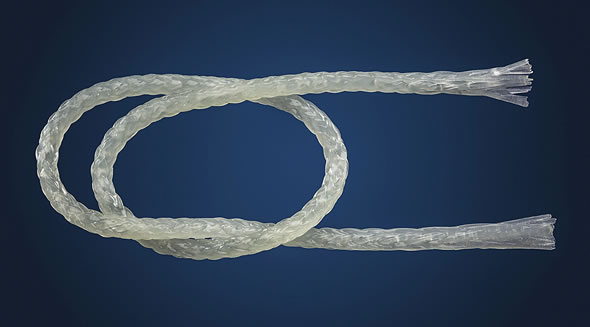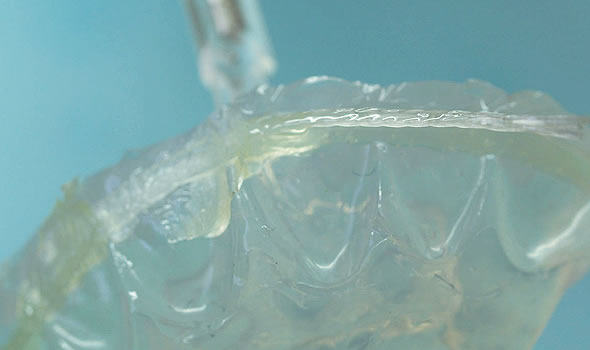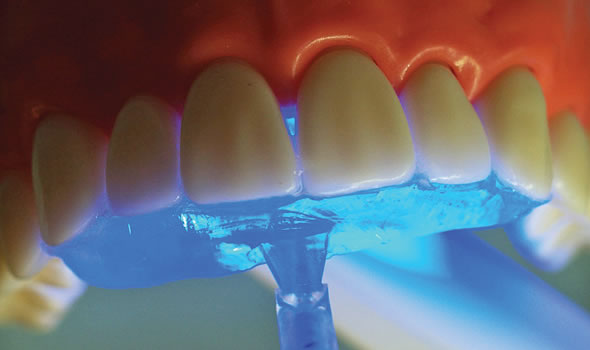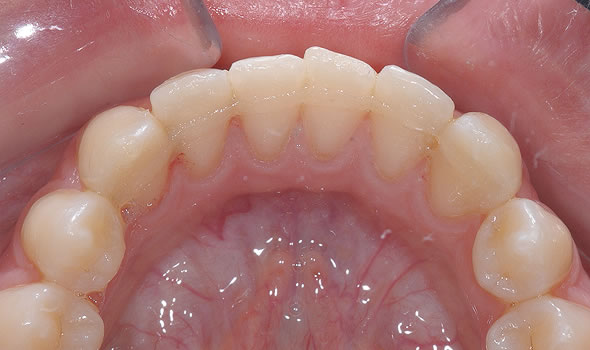
If you are a
customer from
UNITED STATES,
click below.
BUY NOW!
|

If you are a
customer from
CANADA,
click below.
BUY NOW!
|
Dental Glass Fiber Splinting
Ideal for:
- Orthodontic lingual retainers
- Periodontic and traumatic splinting
- Single tooth space maintainers/flippers
Dental Glass Fibers
Dental fibers have been in use for various splinting and reinforcement applications for many years and in the last few years have progressed significantly in their quality and ease of use. Current generation materials are in fact a lot more alike than they are different. The better materials, like Fast Splint Matrix® fibers, are made from a glass fiber and are pre-impregnated in a light cure resin. The pre-impregnation makes the fibers easier to handle and stronger as well, as the resin/glass matrix is more homogeneous due to better resin penetration into the glass bundles. It also results in a chemical bond to the bonding and composite materials that are used in the complete process.

The Fast Splint Matrix® Difference
The use of glass fibers versus metallic options is attractive to dental professionals because they allow for an effective bond to tooth structures when applied correctly, resulting in strong and durable splinting. In addition, fibers are also highly esthetic.
The innovation with the Fast Splint Matrix® technique is the use of an index or matrix that simplifies and speeds up the placement of the fibers and compresses the fibers evenly and intimately to the tooth surfaces, thereby improving overall bonding effectiveness and the durability of the splint, retainer, or space maintainer. The Fast Splint Matrix® technique also results in the retainer/splint being positioned exactly where planned.
The Fast Splint Matrix® technique will accommodate different workflows, allowing users to fabricate splints, retainers and space maintainers either directly in-mouth or indirectly on a model - whatever works better in your situation! Indirect fabrication can be performed by in-house staff or by any dental lab, freeing up chair time and allowing dentists to maximize the profitable use of clinical time.
Main advantages of using the Fast Splint Matrix® technique (using a silicone matrix):
- Less technique sensitive than all-manual placement methods
- Better compression of fibers and adaptation to tooth surfaces
- More precise positioning and ultimate fit of the splint, retainer or space maintainer
- More accessible to a wider range of dental auxiliaries and technicians
- Splints, retainers, and space maintainers can be made indirectly on a model
The Fast Splint Matrix® fibers can also be use with a traditional manuel technique.



If you are a
customer from
UNITED STATES,
click below.
BUY NOW!
|

If you are a
customer from
CANADA,
click below.
BUY NOW!
|



